AMD Radeon Pro W7700 Review: Hitting The Sub-$1000, Pro-Vis Sweet Spot
AMD Radeon Pro W7700 Review: Image Processing, Cryptography, Compute and Rendering
How We Configured Our Test Systems: We tested the professional graphics cards represented in this article on a MSI Z790 Carbon motherboard, equipped with a Core i9-13900KS processor and 32GB of G.SKILL DDR5 RAM clocked at 5,800MT/s. The first thing we did when configuring the test system was enter the UEFI and set all values to their "high performance" defaults, then we disabled any integrated peripherals that wouldn't be put to use, and enabled Resizable BAR support. The memory's clock was dialed in to its optimal performance settings using its XMP profile and the solid state drive was then formatted and Windows 11 Professional was installed and fully updated. When the Windows installation was complete, we installed all of the drivers, applications and benchmark tools necessary to complete our tests.
Out Test System Configuration:
| Hardware Used: Intel Core i9-13900KS (5.4GHz - 6GHz, 24-Core) MSI Z790 Carbond (Intel Z790 Chipset) 32GB G.SKILL DDR5-5800 Samsung SSD 990 Integrated Audio Integrated Network NVIDIARTX A6000 (Ampere Generation) AMD Radeon Pro W6800 AMD Radeon Pro W6600 AMD Radeon Pro W7900 AMD Radeon Pro W7800 AMD Radeon Pro W7700 AMD Radeon Pro W7600 |
Relevant Software: Windows 11 Pro AMD Radeon Pro v23.Q3.1 NVIDIA Quadro Drivers v536.67 Benchmarks Used: SPECviewperf 2020 v3.1 LuxMark v4 Blender v3.6 Cinebench 2024 SiSoft SANDRA 2021 VRMark Blackmagic RAW Speed Test IndigoBench 3DMark DXR Feature Test |
SiSoft SANDRA 20201 GPU Benchmarks
SANDRA's GPGPU Image Processing benchmark runs through an array of filters on its reference data and offers up an aggregate score, derived from a multitude of individual results. Its GPGPU Cryptography benchmark churns through an assortment of workloads, and presents individual results for overall bandwidth, AES256 encryption and decryption, and SHA2-256 hashing bandwidth. CUDA and OpenCL code paths are available in these tests, but we used OpenCL on all cards. Previously, using the CUDA path with NVIDIA GPUs resulted in better performance, but OpenCL actually outperforms CUDA in the latest versions of this test.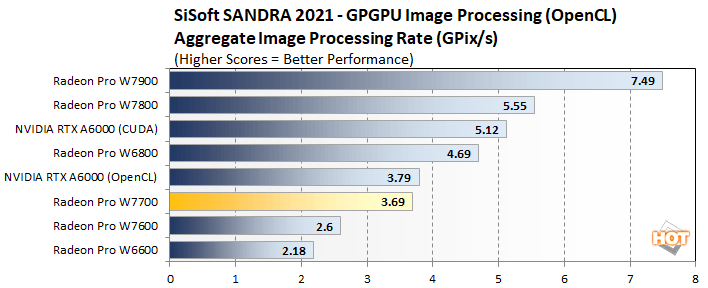
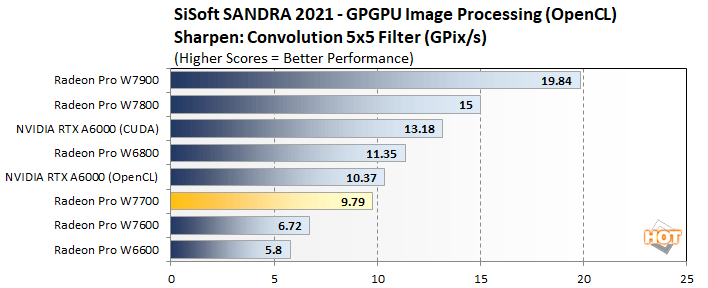
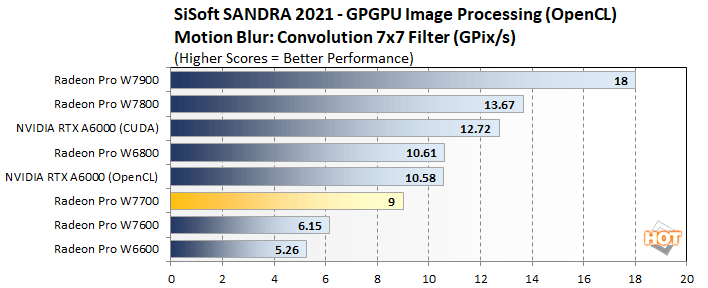
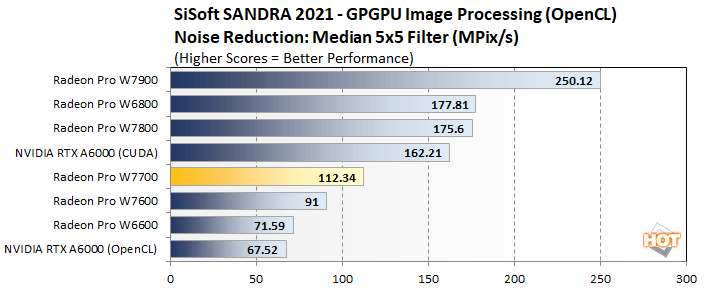
Obviously the more mainstream, lower-priced cards are not going to be able top catch the high-end powerhouses, but we're including data from cards above and below the Radeon Pro W7700 in AMD's line-up to paint a more complete picture of performance. In these image processing tests, the Radeon Pro W7700 clearly outruns the previous-gen Radeon Pro W6600 and the more mainstream Radeon Pro W7600, but the higher-end Wx800 class cards finish well ahead.
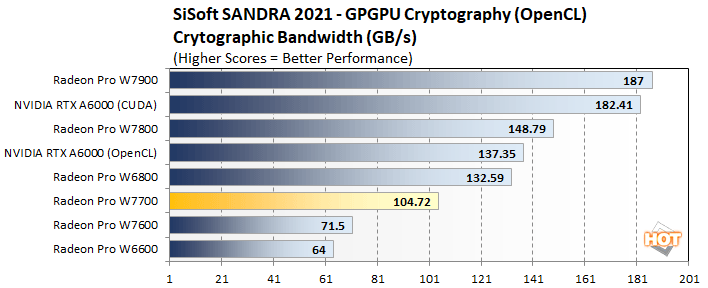
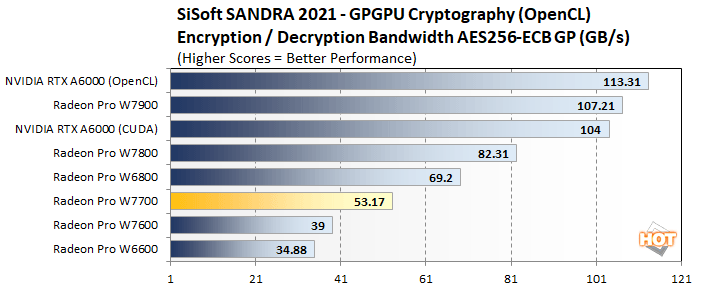
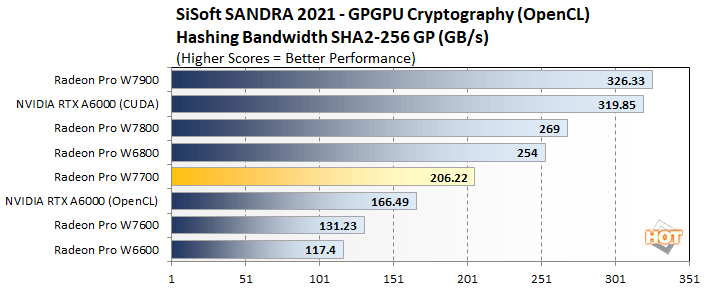
LuxMark v4.0 Benchmarks
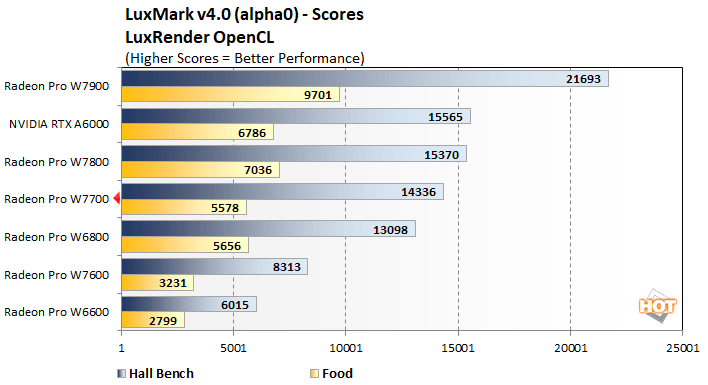
IndigoBench Rendering Benchmarks
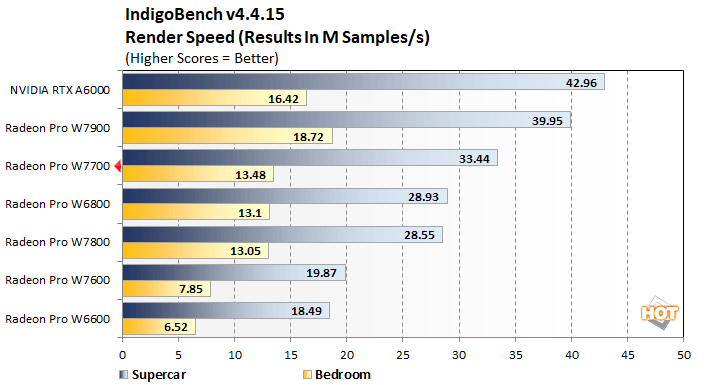
Yes, we know this result doesn't make much sense, but it is nonetheless repeatable with multiple drivers versions, so we're reporting it anyway. The Radeon Pro W7700 does relatively well here, landing in the third position behind the high-end cards. For some reason, the Radeon Pro W7800 falters here, but we haven't figured out the root cause just yet.
Blender v3.6 Rendering Benchmarks
Blender is a free and open source 3D creation suite that can handle everything from modeling, rigging, animation, simulation, rendering, compositing and motion tracking, even video editing and game creation. It has a built-in benchmarking tool that will track the time it takes to complete rendering a particular model. We used the GPU-focused monster, junkshop, and classroom models for these tests...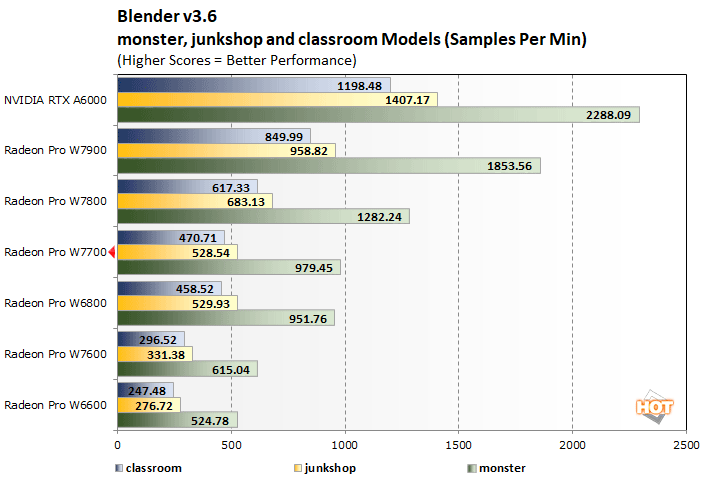
Cinebench 2024 3D Rendering Benchmark
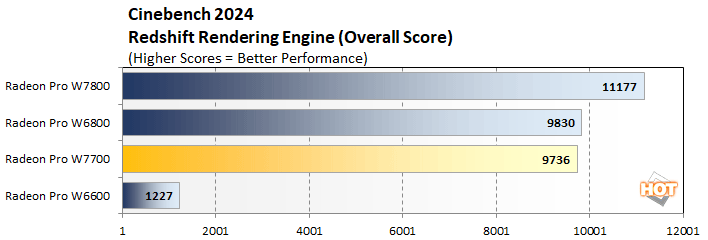
We don't have quite as much data here, but you'll still get the gist. As we've seen in a handful of previous tests, the Radeon Pro W7700 is in a dogfight with the Radeon Pro W6800, and trails the higher-end Radeon Pro W7800 (as it should), but about 14.5 percentage points.







